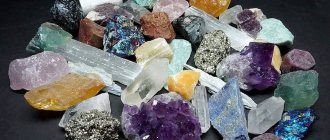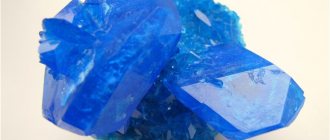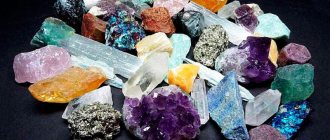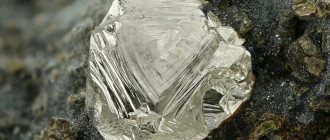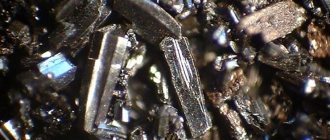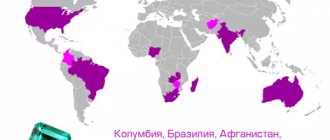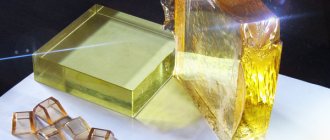The beauty of the underwater world, its splendor and diversity always amazes nature lovers who go to see marine life. At the heart of this diversity are some very unusual inhabitants.
Corals have the most extraordinary range of colors, which shimmer beautifully in the ocean depths.
In total, there are more than 6 thousand such underwater inhabitants in the world and this is one of the richest species of coelenterates.
Are corals animals or plants?
Although corals look like rocks and share several similarities with plants, they are actually animals. To be precise, they are aquatic marine invertebrates (known as polyps) that live in the warm shallows of clear coastal waters around the world. A huge number of marine organisms live among corals, making them some of the most widespread and diverse habitats on Earth.
Corals live in partnership with single-celled algae zooxanthellae. If the algae die, the coral turns white and breaks down over time. This effect is known as coral bleaching.
Decorations
Various jewelry, as well as amulets, rosaries, and magical attributes are made from coral.
Traditionally, jewelers set the stone in gold or silver. They decorate earrings, rings, bracelets, brooches, and hair clips with gemstones. But the most common coral product is beads.
How long can coral live?
Large coral reefs appear to be the oldest living animals in the world. Their lifespan ranges from hundreds of years to thousands. However, light and temperature are necessary conditions for the survival of corals, the temperature should be between 25 and 30°C. If it rises or the light is too intense for a long time, the corals will bleach, leading to death. This may not happen if conditions return to normal within a short time.
Compatibility with zodiac signs
Coral is energetically connected with the planet Moon and Mars. Red or brown stones are ideal for Pisces and Cancer. Such talismans will give them strength and have a positive effect on their health and well-being.
It is favorable for the fire signs of the zodiac - Leo, Aries, Sagittarius - to wear corals in reddish-pink shades. A talisman made of coral of any color will bring good luck to Scorpios. For Gemini, such a stone will become a reliable talisman against negative external influences; it will help Libra to improve relationships with others.
Corals are considered minerals suitable for almost all zodiac signs. The exceptions are Virgo and Capricorn, associated with the element of earth. Taurus can wear coral jewelry from time to time; short contact with this mineral will bring him good luck.
How do corals reproduce?
Another interesting fact about corals is how they reproduce. Their methods vary depending on the species. Some species, such as star corals, are hermaphrodites. This suggests that they produce both sperm and eggs at the same time. Other corals, such as Elkhorn and boulder corals, are gonochoric, meaning they produce single-sex colonies.
In these species, all the polyps in one colony produce only sperm, and all the polyps in another colony produce only eggs. Other coral species reproduce by releasing large numbers of eggs and sperm into the surrounding water to be fertilized in the water. This process is called coral spawning.
Coral colors
There are more than 6,000 species of corals, the color palette of which includes about 350 shades. The color of coral is affected by the composition and amount of organic compounds, which can range from 1% to almost 100%. The most famous are pink, red, blue, white and black corals. It is the latter that contain the most organic substances, are highly valued and are even included in the Red Book, and their industrial extraction is prohibited. The rarest are blue corals.
What are the benefits of corals?
Corals are fundamental elements of reef building, supporting, sheltering and food for many marine life. They also provide a source of sandy sediments that feed on coral sandy beaches. The coral barriers contain 4,000 species of fish, 700 species of coral, and thousands of other plants and animals. Scientists estimate that in total, more than a million plant and animal species are associated with the coral ecosystem.
They are a bulwark against sea power; Their role as natural coastal defenses is critical. Especially in the southwestern Indian Ocean, where southerly and cyclonic waves are present. The protection of coral reefs is also of economic interest to all tourists engaged in recreational and commercial activities (scuba diving, glass bottom boating, professional fishing and broader excursions to beach hotels and restaurants).
Interesting facts about coral
- It is prohibited to export corals from Egypt and Thailand, and attempts to violate this ban are punishable by a fine of $1,000.
- Corals are unique in that they have growth rings, like trees. These rings are used to determine the age of corals, which reaches hundreds of years.
- Classic corals grow in tropical waters, and their hardness allows them to withstand the harsh conditions of rough seas and oceans. Corals with a thin plate structure are found only at great depths in lagoons.
- Large, hard coral beds act as cleaning stations in the seas for fish and animals, which rub against them to remove layers of dead skin or parasites.
- In shallow waters, corals are damaged by ultraviolet radiation. If the ozone layer decreases significantly, corals in shallow waters will not be able to grow.
Where will you find corals?
Coral reefs are found in more than 100 countries around the world. Most of them are located in the Pacific Ocean, Indian Ocean, Caribbean Sea, Red Sea and Persian Gulf. But only tropical and subtropical corals form large barriers and reefs in shallow waters. Hard corals and soft corals can be found in the deep seas.
Corals are quite picky
So, for their growth they need adequate conditions: sufficient salinity of water, transparency, warmth and a lot of food. That is why coral reefs live in the waters of the Pacific and Atlantic oceans.
It is interesting that in the World Ocean the area of coral reefs totals about 27 million square meters. km.
The Great Barrier Reef is considered one of the greatest creations of these underwater growths. It extends near Australia.
Where are the most beautiful coral reefs?
Australia's Great Barrier Reef is the largest reef system in the world and can be seen from space. Covering an area of 133,000 square miles, it consists of more than 2,900 individual reefs and 1,050 islands, stretching over 1,400 miles.
The Belize Reef Barrier is the second largest in the world after Australia's Great Coral Barrier. The reef barrier is about 300 kilometers long and 40 kilometers wide. The atolls are located beyond the barrier and offer extraordinary dives.
The clear waters surrounding the Andros Archipelago in the Bahamas are ideal for diving. The corals extend over 225 km along the eastern coast of Andros to the end of the “Tongue of the Ocean”. An ocean trench whose depth falls from 35 to 1800 meters.
Lime reserves thanks to coral reefs are almost inexhaustible
Some areas of such reefs are so large that they can rightfully be called coral islands.
Coral islands have their own life and vegetation. You can even find cacti and tall shrubs here.
The local population uses corals to make jewelry.
The results are very beautiful and rainbow-colored products for the summer season.
Corals are also used as a building material, polishing metal surfaces and producing medicines.
If a person is damaged by the coral barrier, the skin will take a very long time to heal. Even suppuration may appear at the wound site, regardless of whether the coral is poisonous or not.
Why are coral reefs under threat?
Coral reefs are being destroyed due to many factors. Increased demand for fish has led to overfishing of species. This can easily affect the ecological balance and biodiversity of the reef. For example, overfishing of herbivorous fish can lead to high levels of algae growth, suffocating the living conditions for corals.
Tourism generates large sums of money for host countries, but if left unregulated, tourist influxes can cause environmental damage: careless divers, boat anchors, hotels, sewage, etc.
Over the past 10 years, coral diseases have become increasingly common, causing them to lose their pigmentation and die.
This is contributing to the destruction of coral reefs around the world. What consequences this will entail remains to be seen. 03/06/2019 TanyaVU 740
Coral polyps interesting facts
Coral polyps or marine ones are living creatures that may not move at all, and if they move, then very little. They live at the very bottom of the sea in large groups, rarely alone and do not have a backbone.
You can find a more precise definition of what polyps are; biologists say they are certain forms of aquatic animals that have stopped at a certain stage of development. And at the next stage you get a jellyfish. Among this class one can count about 6 thousand species, among them there are even those that do not have a skeleton, which consists only of protein.
If you translate the name of coral polyps literally from Latin, you get this funny name - animal - flower. It is this name that indicates the shape of the polyps themselves. All of them really resemble a flower, they can be of different diameters, sometimes reaching a diameter of about 60 cm, and the height may well be a meter. Coral polyps can be used as decoration in an aquarium, and jewelers also use them to make jewelry.
Coral grows about one centimeter per year if they grow in comfortable conditions. They grow at great depths, because this is where a large amount of plankton lives, and they feed on it. And large polyps that live alone can feed on small fish.
Polyps can reproduce in two ways: the first is a larva, which is obtained from the mating of jellyfish, it settles somewhere and begins to grow. The second is the division of polyps into parts, in other words, infertile reproduction. Jellyfish appear due to polyps.
There are types of polyps that cannot turn into jellyfish. Such polyps create coral reefs; they have only a skeleton consisting of lime.
Since it was already said earlier that some polyps do not have a skeleton, sea anemone is one of them. It lives alone and can be of impressive size - about one and a half meters. They lead an exclusively sedentary lifestyle, but can also coexist with some species of fish. Very large sea anemones can even feed on medium-sized fish. They can easily move along the bottom by squeezing and unclenching their soles, but very slowly.
In nature, there are not only polyps that do not turn into jellyfish, since they lack this stage, but there are also jellyfish that cannot become polyps.
Polyps are very important in the environment; they purify seawater from organic particles. Coral limestone can also be used for construction, but not in all countries. It is coral polyps that take part in the formation of reefs.
Did you like the article? Share!
A message about jellyfish. Interesting facts about jellyfish
Among the most unusual animals on Earth, jellyfish are also among the oldest, with an evolutionary history dating back hundreds of millions of years. In this article, we reveal 10 basic facts about jellyfish, from how these invertebrates move through deep water to how they sting their prey.
Jellyfish are classified as cnidarians or cnidarians.
Named after the Greek word for "sea nettle," cnidarians are marine animals characterized by a jelly-like body structure, radial symmetry, and stinging "cnidocyte" cells on their tentacles that literally explode when capturing prey. There are about 10,000 species of cnidarians, about half of which are classified as coral polyps, and the other half include hydroids, scyphoids, and box jellyfish (the group of animals most people call jellyfish).
Cnidarians are among the most ancient animals on earth; Their fossil roots go back almost 600 million years!
There are four main classes of jellyfish
Scyphoid and box jellyfish are two classes of cnidarians that include classical jellyfish; The main difference between the two is that box jellyfish are cube-shaped and bell-shaped, and are slightly faster than scyphoid jellyfish. There are also hydroids (most species of which do not go through the polyp stage) and staurozoa - a class of jellyfish that lead a sedentary lifestyle, attaching to a hard surface.
All four classes of jellyfish: scyphoid, box jellyfish, hydroid and staurozoa belong to the subphylum of cnidarians - medusozoa.
Jellyfish are among the simplest animals in the world
What can you say about animals without central nervous, cardiovascular and respiratory systems? Compared to other animals, jellyfish are extremely simple organisms, characterized primarily by wavy bells (which house the stomach) and tentacles containing many stinging cells. Their almost transparent bodies consist of only three layers of outer epidermis, middle mesoglea, and inner gastrodermis and water making up 95-98% of the total volume, compared to 60% in the average human.
Jellyfish are formed from polyps
Like many animals, the life cycle of jellyfish begins with eggs, which are fertilized by males. After this, things get a little more complicated: what emerges from the egg is a free-swimming planula (larva) that looks like a giant slipper ciliate. The planula then attaches itself to a solid surface (sea floor or rocks) and develops into a polyp resembling miniature corals or sea anemones. Finally, after several months or even years, the polyp detaches and develops into an ether, which grows into an adult jellyfish.
Some jellyfish have eyes
Cobojellyfish have a couple of dozen light-sensitive cells in the form of an eyespot, but unlike other marine ones, some of their eyes have a cornea, lenses and retina. These compound eyes are arranged in pairs around the circumference of the bell (one pointing upward and the other downward, providing a 360-degree view).
The eyes are used to search for prey and protect themselves from predators, but their main function is the correct orientation of jellyfish in the water column.
Jellyfish have a unique way of delivering venom
The world's most venomous animals tend to release their venom when they bite, but not jellyfish (and other coelenterates), which have evolved specialized organs called nematocysts. When the jellyfish's tentacles are stimulated, enormous internal pressure is created in the stinging cells (about 2,000 pounds per square inch) and they literally explode, piercing the skin of the unfortunate victim to deliver thousands of tiny doses of venom. The nematocysts are so powerful that they can be activated even when the jellyfish is washed ashore or dies.
Sea wasp - the most dangerous jellyfish
Most people are afraid of poisonous spiders and rattlesnakes, but the most dangerous animal on the planet to humans may be a species of jellyfish: the sea wasp (Chironex fleckeri). With a bell the size of a basketball and tentacles up to 3m long, the sea wasp prowls the waters off Australia and Southeast Asia and has killed at least 60 people in the last century.
A slight touch of the tentacles of a sea wasp causes excruciating pain, and closer contact with these jellyfish can kill an adult in a couple of minutes.
The movement of jellyfish resembles the operation of a jet engine
Jellyfish are equipped with hydrostatic skeletons, invented by evolution hundreds of millions of years ago. Essentially, the jellyfish's bell is a fluid-filled cavity surrounded by circular muscles that spray water in the opposite direction of movement.
The hydrostatic skeleton is also found in starfish, worms and other invertebrates. Jellyfish can move along with ocean currents, thereby saving themselves from unnecessary effort.
Threat of extinction
The threat of extinction of corals is a fact that needs to be known. Corals are animals and they play a significant role in the ecosystem. Recent studies have shown that by 2030, at least 50% of the world's coral formations will cease to exist. This is influenced by many factors: coral mining, agricultural and urban runoff, pollution (organic and inorganic), overfishing, including poaching, canal digging, natural disasters. More serious threats to coral ecosystems are rising sea temperatures, rising sea levels, and changes in pH from ocean acidification, all of which are linked to greenhouse gas emissions. In 1998, 16% of the world's reefs died as a result of rising water temperatures.
The healing properties of coral
The healing qualities of coral are associated with its composition, which is represented by a large amount of calcium and many important trace elements, such as iodine.
Coral powder has long been used in folk medicine to restore the skeletal system and treat thyroid diseases.
Preparations based on corals increase tone, improve memory, and support the cardiovascular and nervous systems. With their help, diseases of the liver, intestines, and stomach ulcers are treated. In addition, they relieve headaches, gout attacks and sore throats.
The magical properties of coral
Coral amulets attract good luck to their owner, endow him with the gift of foresight, and have a good effect on mental state and logical thinking. They are believed to protect against the evil eye and lightning.
In addition, corals are an excellent remedy for fatigue and for increasing vitality. They relieve tension, apprehensions, fears, depression, and give prudence. The positive effect of coral on the psyche is reflected in the neutralization of such negative states as anger and envy.
Coral amulets are considered the best protectors against bad people, and they are often given to children. Coral also protects travelers from hurricanes and storms, and helps them return home safely.
